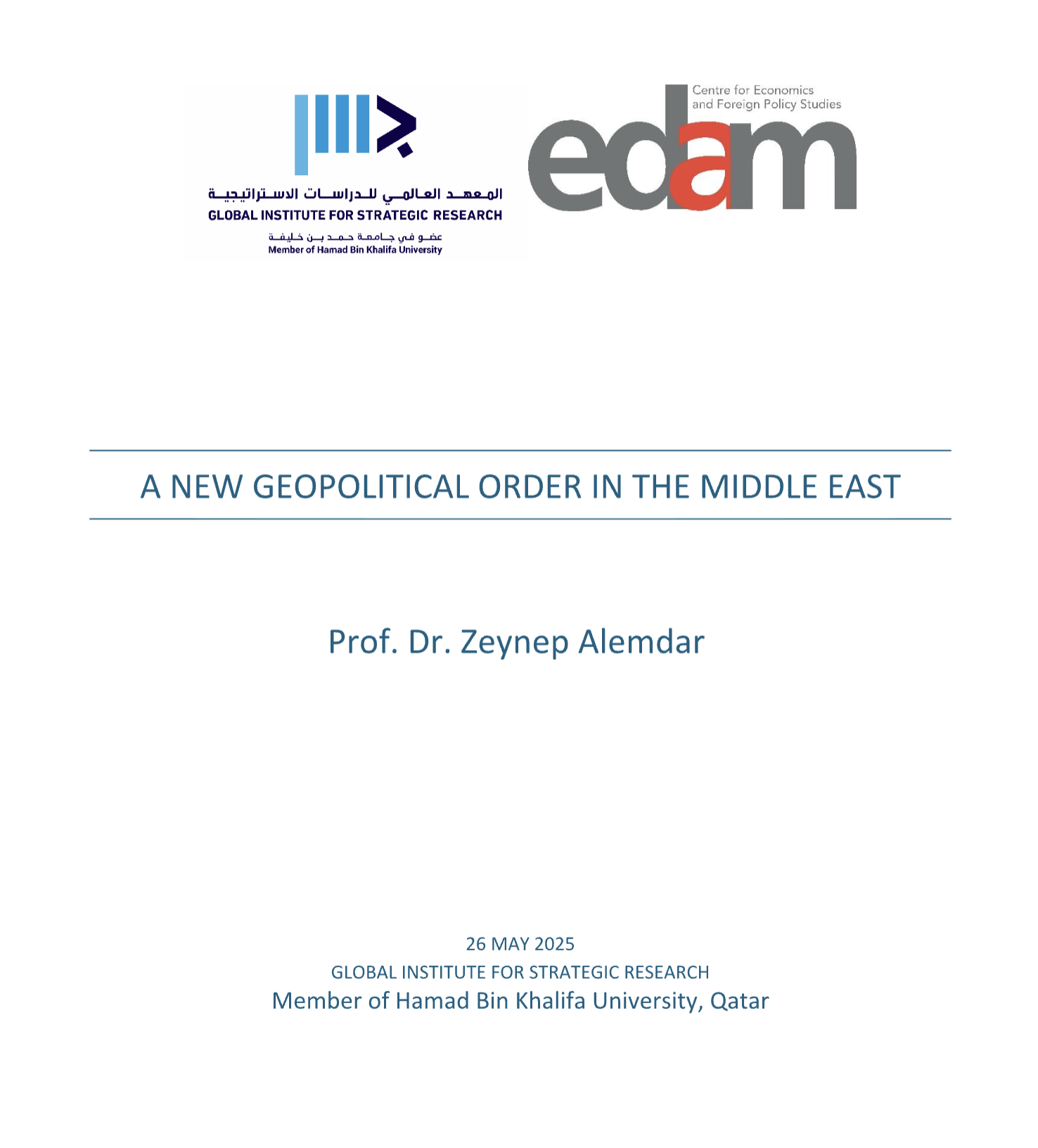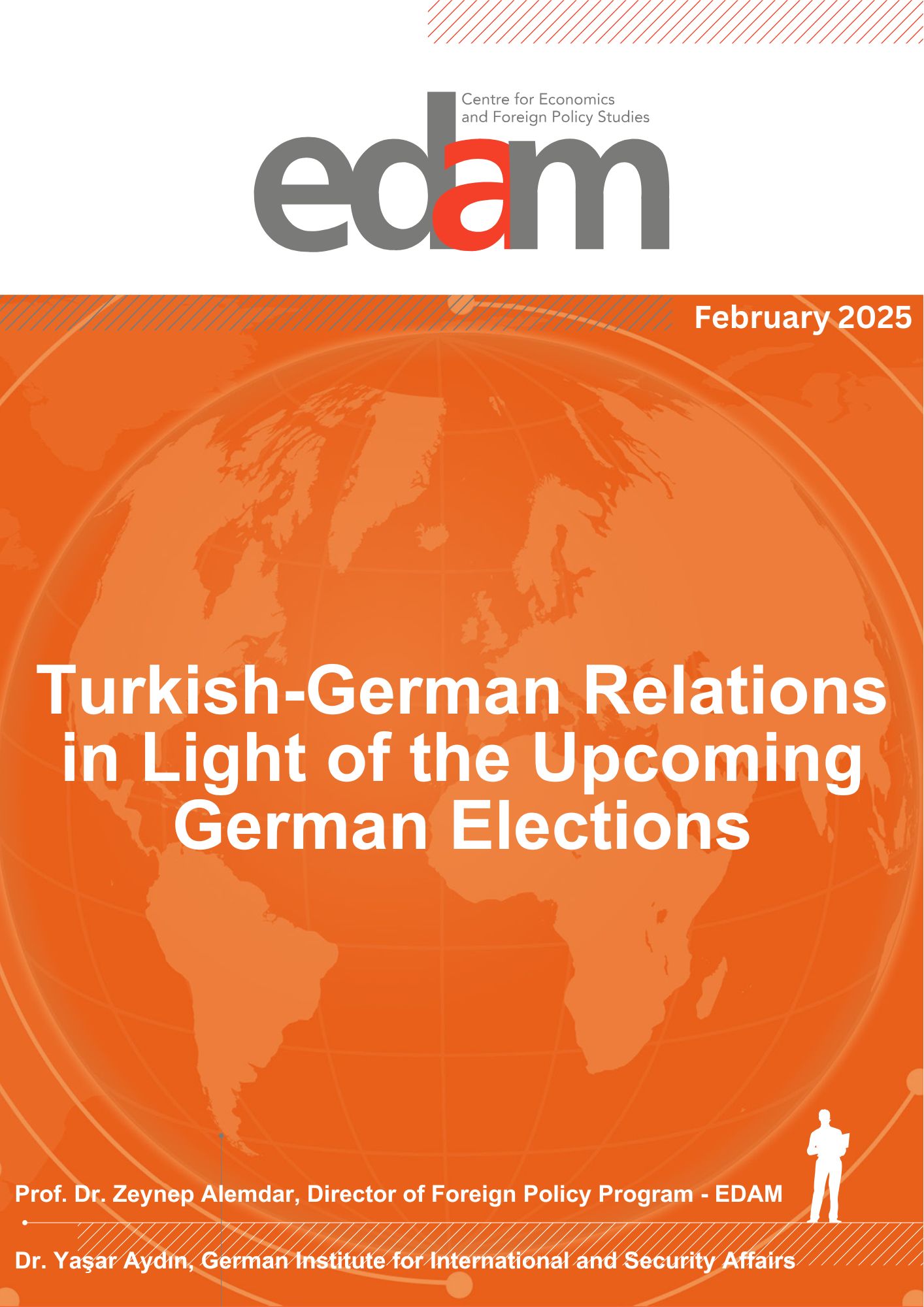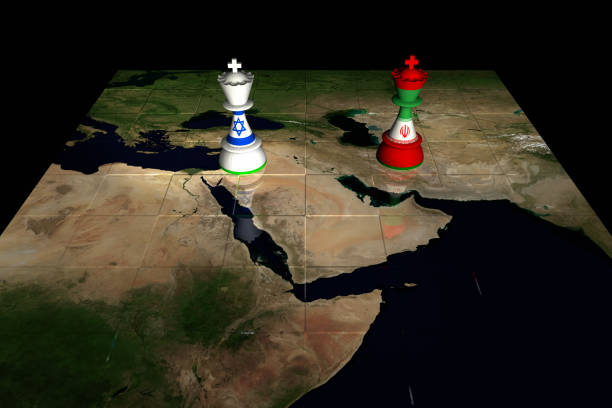Yayının İngilizcesine Ulaşmak İçin Tıklayın
1. INTRODUCTION
Recent decades have witnessed a phenomenal surge in processes of regional integration. Such processes have resulted in the proliferation of regional institutions across the globe. While the number of preferential trade agreements have increased continuously in the postwar period to about 70 by 1990, this number has skyrocketed in the last two decades, reaching almost 300 by 2010 (WTO, 2011: 3). In its most recent review of the state of world trade, the WTO reports that all member states of the Organization “belong to at least one [preferential trade agreement (henceforth PTA)]” (except for Mongolia), and that the average number of these kinds of arrangements to which a WTO member is party remains at 13. Among the WTO members, the European Union (EU), as a party to 30 agreements, is the leading member in terms of the largest number of participation in PTAs. Turkey which is signatory to 17 PTAs ranks very high (seventh) on this list of WTO members following the EU, Chile (26), Mexico (21), EFTA members (20-22), Singapore (19), and Egypt (18) (WTO, 2011: 57).
The phenomenal surge in processes of regional economic integration and cooperation across the globe in recent decades requires more policy oriented research on the nature, scope and extent of these processes in a comparative perspective. This paper aims to explore the extent of regionalization in an understudied geographical region – the Black Sea area. It does so by, first, analyzing the nature of regionalism that the Organization of Black Sea Economic Corporation (BSEC) represents and measuring the degree of regionalization therein in the 2000s by relying on two sets of indicators: intra-regional export/import/trade volumes as shares of the regions’ total global export/import/trade , and intra-regional export/import/trade volumes as shares of the regions’ total output measured in GDP. Second, it evaluates the extent of Turkey’s economic integration with the Black Sea region in comparative terms based on the share of the BSEC area in Turkey’s overall trade and investment flows. The paper concludes by summarizing the findings of the study.
2. THE RECENT WAVE OF REGIONALISM IN THE BLACK SEA AREA: BSEC
All of the countries surrounding the Black Sea (Armenia, Azerbaijan, Bulgaria, Georgia, Moldova, Romania, Russia, Turkey and Ukraine) along with Albania and Greece joined to launch the BSEC in 1992. The aim of the Organization was to enhance “the mutually advantageous economic cooperation arising from their geographic proximity and from the reform process and structural adjustment’ through ‘the establishment of a Europe-wide economic area, as well as to the achievement of a higher degree of integration of the Participating States into the world economy”. The BSEC was transformed into a full-fledged regional economic organization by acquiring international legal identity through its Charter which went into effect in 1999. The eleven members were then joined by Serbia (then Serbia and Montenegro) in 2004.
The type of regionalism that best characterizes the case of BSEC is difficult to identify given that the Organization involves cooperation and policy coordination in a number of areas ranging from agriculture to combating crime and from education to trade; this coordination has, however, remained very limited to date. At the same time BSEC features common regional institutions in the form of a Parliamentary Assembly and a Trade and Development Bank, which again have remained relatively weak. There may be a number of types of regionalism to be considered for the Black Sea region, as identified by Emerson (2008: 2-4) who proposed a typology of nine scenarios. Regionalism in the case of BSEC may fit, though rather loosely, more than one of these typologies, which may compete with each other. Technical regionalism does not so far characterize BSEC since relatively strong cooperation in a limited number of areas such as environment and energy does not use BSEC as an institutional base. Second, it can be argued that good neighborliness regionalism exists to a degree. For example, it is claimed that BSEC improved relations between Georgia and Russia in 2007, a year before outright war (Fawn, 2009: 23) or that BSEC provides a forum where Armenian and Azerbaijani representatives meet since the two countries lack diplomatic ties due to the former’s occupation of Nagorno-Karabagh (Fawn, 2009: 23). Third, security regionalism has remained one of the weakest areas of cooperation in BSEC due to the ‘high-politics’ nature of the issues and differing geo-political concerns of the members involved. Fourth, eclectic regionalism may perhaps best fit the case of BSEC since there is evidently a motivation to create a degree of regionalism, albeit characterized by rather disperse aims. Fifth, institutional regionalism does not fit the case of BSEC since institutionalization in the form of a Parliamentary Assembly and a Trade and Development Bank does not reveal much in itself about the degree of “regionness” (Fawn, 2009: 19). Sixth, dysfunctional regionalism is another type that fits the case of BSEC as evidenced by the frozen conflicts of Nagorno-Karabagh, Moldova (Trans-Dniester) and Georgia (Abkhazia and South Ossetia), all of which involve Russia directly or indirectly. Seventh, transformative regionalism clearly does not apply whereas eighth, compensatory regionalism is potentially plausible depending on the EU’s future strategy towards cooperation in this region. Finally, geopolitical regionalism can in part be claimed to characterize the BSEC area as evidenced by Russia’s policies especially in relation to Ukraine, Moldova and Georgia.
This brief assessment of the types of regionalism that characterize the case of BSEC demonstrates the variety of regionalisms that may be applicable to BSEC and in doing so implies that the different types of regionalism that are applicable may be conflicting amongst themselves. Given the present-day (and future) ambiguity in terms of the regionalism templates to be followed by BSEC, any evaluation of the ‘regionness’ of the Black Sea area ought to start with measuring the degree of regionalization to date.
3. REGIONALIZATION IN THE BLACK SEA AREA IN THE 2000S
3. a. Regionalization in the BSEC Area in Comparative Perspective
Table 1 Panel 1 shows that after a period of continuous growth by almost fourfold marked by a peak of USD 820073 million in 2008, the value of total exports of the BSEC area contracted by more than 35 per cent in 2009 due to the global economic crisis. The figure bounced back in 2010 by 25 per cent reaching a level of USD 664506 million in 2010, however, this still remains well below its 2008 level. The intra-regional volume of exports before the global economic crisis set in display a more pronounced increase (by more than fivefold) between 2000 and 2008, reaching a high of USD 146784 million in 2008. The total volume of intra-regional exports, however, decreased by almost half in 2009 from its level in 2008, only to increase by around a third reaching USD 99376 million in 2010 – a level which displays an overall threefold increase with respect to the figure in 2000. As a result, the BSEC intra-regional export share, which expresses the total volume of exports of BSEC members to other BSEC members as a proportion of total volume of exports of BSEC members to the world, increased from 14.3 per cent in the year 2000 to 18.0 per cent in the peak year of 2007. After this period, this share declined to 14.0 per cent in 2009 followed by an increase in 2010 to 15.0 per cent. During the 2000-2008 period, the ratio of intra-BSEC volume of exports to BSEC GDP showed a marked increase from 3.3 per cent to 8.9 per cent, which then declined to 6.6 per cent in 2010. The intra-regional export performance of BSEC members during the last decade, therefore, shows that the improvements in the intra-regional export performance has outstripped by twofold the rate at which national output grew.
Table 1: Patterns of Trade and Regionalization in the BSEC Area
| EXPORTS | 2000 | 2005 | 2006 | 2007 | 2008 | 2009 | 2010 |
| I. Total exports of BSEC | 172914 | 412524 | 500262 | 610836 | 820073 | 530309 | 664506 |
| II. BSEC exports to other BSEC | 24736 | 65947 | 85478 | 109799 | 146784 | 74447 | 99376 |
| III. (II/I)x100 | 14,3 | 16,0 | 17,1 | 18,0 | 17,9 | 14,0 | 15,0 |
| IV. GDP of all BSEC (billion) | 758763 | 1763247 | 2122408 | 1419383 | 1655395 | 1394228 | 1501939 |
| V. (II/IV)x100 | 3,3 | 3,7 | 4,0 | 7,7 | 8,9 | 5,3 | 6,6 |
IMPORTS | 2000 | 2005 | 2006 | 2007 | 2008 | 2009 | 2010 |
| I. Total imports of BSEC | 153981 | 376658 | 477843 | 644982 | 813456 | 526925 | 648971 |
| II. BSEC imports from other BSEC | 26624 | 71143 | 92972 | 120298 | 153470 | 94515 | 123997 |
| III. (II/I)x100 | 17,3 | 18,9 | 19,5 | 18,7 | 18,9 | 17,9 | 19,1 |
| IV. GDP of all BSEC (billion) | 758763 | 1763247 | 2122408 | 1419383 | 1655395 | 1394228 | 1501939 |
| V. (II/IV)x100 | 3,5 | 4,0 | 4,4 | 8,5 | 9,3 | 6,8 | 8,3 |
TRADE VOLUME | 2000 | 2005 | 2006 | 2007 | 2008 | 2009 | 2010 |
| I. Total trade of BSEC | 326896 | 789182 | 978106 | 1255818 | 1633529 | 1057234 | 1313477 |
| II. BSEC trade with BSEC | 51361 | 137090 | 178450 | 230098 | 300254 | 168962 | 223372 |
| III. (II/I)x100 | 15,7 | 17,4 | 18,2 | 18,3 | 18,4 | 16,0 | 17,0 |
| IV. GDP of BSEC | 758763 | 1763247 | 2122408 | 1419383 | 1655395 | 1394228 | 1501939 |
| V. (II/IV)x100 | 6,8 | 7,8 | 8,4 | 16,2 | 18,1 | 12,1 | 14,9 |
Source: IMF Direction of Trade Statistics (http://elibrary-data.imf.org/DataExplorer.aspx)
Table 1 Panel 2 shows that the volume of imports has increased by more than fourfold between 2000 and 2008 in the BSEC area when this figure reached USD 813456 million. Because of the contraction of the volume of imports thereafter, the overall increase in this figure remains at 321 per cent during the decade covering 2000-2010 leaving a slightly favorable current account balance for the area. Although the intra-regional volume of imports point to a more than fourfold increase for the period 2000- 2008, the overall increase for the entire decade between 2000 (USD 26624 million) and 2010 (USD 123997 million) remains at 365 per cent. In terms of the BSEC intra-regional import share, these figures imply that the total volume of imports of BSEC members from other BSEC members as a proportion of total volume of imports of BSEC members from the world increased from 17.3 per cent in the year 2000 to 19.1 per cent at the end of the decade. The ratio of intra-BSEC volume of imports to BSEC GDP displayed a marked increase from 3.3 per cent in 2000 to 8.3 in 2010 after having peaked at 9.3 per cent in 2008. These figures show that trade openness in the BSEC area has been increasing at a much faster pace than the rate at which regional GDP grew.
In terms of total volumes of trade, Table 1 Panel 3 shows that BSEC area’s world trade has increased threefold from USD 326896 million in 2000 to USD 1313477 million by the end of the decade in 2010. Such a significant rise masks an even more significant increase between 2000 and 2008 when the total volume of trade jumped fourfold. Intra-BSEC volume of trade displays an even more punctuated steep rise until 2008 and a sharper decline afterwards: the rise in the volume of trade increased by almost fivefold between 2000 (USD 51361 million) and 2008 (USD 300253 million), and the overall rise during the decade remained at 335 per cent with the figure reaching USD 223372 million. In terms of the total volume of trade of BSEC members with other BSEC members as a proportion of total volume of trade of BSEC members with the world, the intra-BSEC volume of trade share remained more or less stable during the early part of the decade only to jump to 17.7 per cent in 2004 and 18.4 per cent in 2008 followed by a decline afterwards receding to 17.0 per cent in 2010. The ratio of intra-BSEC volume of trade to BSEC GDP displayed a marked increase from 6.8 per cent in 2000 to 14.9 in 2010 after having peaked at a high of 18.1 per cent in 2008. The increases in this figure demonstrate that the volume of trade in the region grew at a much faster rate than the rate at which BSEC GDP grew.
Figure 1: Intra-Regional Trade Shares: ASEAN, BSEC, MERCOSUR, CIS, ECO, EU, NAFTA
Source: UNU CRIS Regional Indicators, Regional Integration Knowledge System Database (http://www.cris.unu.edu/riks/web/data)
Figure 1 illustrates the degree of regionalization in BSEC in comparison with those in a set of selected regional integration arrangements for the period between 2000 and 2008. The comparison is based on data retreived from the United Nations Commodity Trade Statistics Database (UN COMTRADE) and compiled by the United Nations University Comparative Regional Integration Studies Institute (UNU-CRIS) within the framework of the Regional Integration Knowledge System (RIKS) Project. In terms of the first indicator of regionalization, Figure 1 shows that BSEC’s intra-regional trade share remains at a modest level and increases steadily from 14.3 per cent to 16.9 per cent. The end-of-period share for BSEC is comparable to that of the MERCOSUR (Common Market of the South) which registered a secular decline from 20.8 per cent in 2000 to 16.2 per cent in 2008. While these shares remain much higher than those for the Economic Cooperation Organization (ECO), they are lower than the intra-regional trade shares for the Association of South Eastern Asian Nations (ASEAN) (which increased from 22.4 per cent to 24.8 per cent) and those of the Commonwealth of Independent States (CIS) which fluctuated markedly between 26.6 per cent in 2000 and 21.0 per cent in 2008. The intra-regional trade shares for the North American Free Trade Agreement (NAFTA), which registered a secular decline during this period from 46.4 per cent in 2000 to 39.9 per cent in 2008, remain significantly higher than those for BSEC. The EU’s intra-regional trade shares, which are exceptionally higher than those of any other regional integration arrangement, remain stable hovering around 63.2 per cent in 2000 and 62.3 per cent in 2008. Therefore, as an indicator of regional integration, the intra-regional trade share in BSEC remains at a modest level comparable with those for some other regional arrangements, yet displaying a steadily increasing rate of regionalization. In conclusion, even though BSEC’s intra-regional trade share is comparable to looser forms of regional cooperation rather than those of deeper regional integration, it nevertheless displays a relatively higher degree of regionness than expected given that member states of BSEC belong to other and deeper regional integration arrangements such as the EU and CIS (see Table 2 below), which may be exerting a trade diversion effect on the intra-BSEC trade.
Table 2: Regional Trade Agreements of BSEC Members
| BSEC countries | RTAs with BSEC Members (bilateral agreements unless otherwise stated) | RTAs with Non-BSEC Members and/or Regions |
| Albania | Turkey | Central European Free Trade Agreement (CEFTA)[1] 2006, European Free Trade Association (EFTA)[2], European Union (EU) |
| Armenia | Moldova, Russia, Ukraine, Georgia | Kazakhstan, Turkmenistan, CIS[3], Kyrgyz Republic |
| Azerbaijan | Georgia, Ukraine | CIS, Economic Cooperation Organization (ECO)[4] |
| Bulgaria* | EU-Albania[5], EU-Serbia, EU-Turkey[6] | EC27, EU-Algeria, EU-Andorra, EU-Bosnia-Herzegovina, EU-Cameroon, EU-CARIFORUM States EPA, EU-Chile, EU-Côte d’Ivoire, EU-Croatia, EU-Eastern and Southern Africa States EPA, EU-Egypt, EU-Faroe Islands, EU-Former Yugoslav Republic of Macedonia, EU-Iceland, EU-Israel, EU-Jordan, Republic of Korea, EU-Lebanon, EU-Mexico, EU-Montenegro, EU-Morocco, EU-Norway, EU-Overseas Countries and Territories (OCT), EU-Palestinian Authority, EU-Papua New Guinea/Fiji, EU-San Marino, EU-South Africa, EU-Switzerland-Liechtenstein, EU-Syria, EU-Tunisia, European Economic Area (EEA) |
| Georgia | Armenia, Azerbaijan, Russia, Ukraine, Turkey | CIS, Kazakhstan, Turkmenistan |
| Greece* | EU-Albania, EU-Serbia, EU-Turkey | EC27, EU-Algeria, EU-Andorra, EU-Bosnia-Herzegovina, EU-Cameroon, EU-CARIFORUM States EPA, EU-Chile, EU-Côte d’Ivoire, EU-Croatia, EU-Eastern and Souhern Africa States EPA, EU-Egypt, EU-Faroe Islands, EU-Former Yugoslav Republic of Macedonia, EU-Iceland, EU-Israel, EU-Jordan, Republic of Korea, EU-Lebanon, EU-Mexico, EU-Montenegro, EU-Morocco, EU-Norway, EU-Overseas Countries and Territories (OCT), EU-Palestinian Authority, EU-Papua New Guinea/Fiji, EU-San Marino, EU-South Africa, EU-Switzerland-Liechtenstein, EU-Syria, EU-Tunisia, European Economic Area (EEA) |
| Moldova | Armenia, Ukraine | CEFTA, CIS, Kyrgyz Republic |
| Romania* | EU-Albania, EU-Serbia, EU-Turkey | EC27, EU-Algeria, EU-Andorra, EU-Bosnia-Herzegovina, EU-Cameroon, EU-CARIFORUM States EPA, EU-Chile, EU-Côte d’Ivoire, EU-Croatia, EU-Eastern and Southern Africa States EPA, EU-Egypt, EU-Faroe Islands, EU-Former Yugoslav Republic of Macedonia, EU-Iceland, EU-Israel, EU-Jordan, Republic of Korea, EU-Lebanon, EU-Mexico, EU-Montenegro, EU-Morocco, EU-Norway, EU-Overseas Countries and Territories (OCT), EU-Palestinian Authority, EU-Papua New Guinea/Fiji, EU-San Marino, EU-South Africa, EU-Switzerland-Liechtenstein, EU-Syria, EU-Tunisia, European Economic Area (EEA) |
| Russia | Armenia, Georgia, Ukraine | Common Economic Zone (CEZ)[7], CIS, Eurasian Economic Community (EAEC)[8], Kyrgyz Republic |
| Serbia | Turkey | CEFTA, European Free Trade Association (EFTA), EU, Protocol on Trade Negotiations (PTN)[9] |
| Turkey | Albania, Georgia, Serbia | ECO, EFTA, Egypt, EU, Protocol on Trade Negotiations (PTN), Bosnia-Herzegovina, Chile, Croatia, Former Republic of Macedonia, Israel, Jordan, Montenegro, Morocco, Palestinian Authority, Syria, Tunisia |
| Ukraine | Armenia, Georgia, Azerbaijan, Moldova, Russia | Common Economic Zone (CEZ), CIS, Kyrgyz Republic, Belarus, Former Yugoslav Republic of Macedonia, Kazakhstan, Tajikistan, Uzbekistan, Turkmenistan |
Source: World Trade Organization (http://www.wto.org/english/tratop_e/region_e/rta_participation_map_e.htm?country_selected=BGR&sense=b) accessed on February 29, 2012
Note*: Regional Trade Agreements of Bulgaria, Greece and Romania are determined by their EU membership.
4. THE BLACK SEA AREA IN TURKEY’S INTERNATIONAL ECONOMIC RELATIONS IN THE 2000s
Tables 3 and 4 provide a quantitative measurement of the significance of the BSEC area in Turkey’s international economic relations relative to other geographically defined areas in the last decade in terms of international trade and foreign direct investment respectively.
In terms of international trade, Table 3 Panel 1 shows that Turkey’s total volume of exports increased by more than fourfold between 2000 and 2010. This has not been a steady increase as the figure reached a peak of USD 132313 million in 2008, only to deteriorate the following year due to the global economic crisis. The total volume of exports recovered to USD 113965 million in 2010, which however is still below the peak level in 2008. Within this overall increase in Turkey’s total volume of exports the share of total exports to BSEC area demonstrated an improvement, though only modestly. The share of exports to BSEC area in Turkey’s total exports increased from 8.5 per cent in 2000 to 12.7 per cent in 2010, having peaked at 15.8 per cent in 2008. Reflecting this modest upward trend, exports to BSEC area as a share of Turkey’s GDP increased from 0.9 per cent in 2000 to 2 per cent in 2010. The figures for the BSEC area are more meaningful if compared with the corresponding figures for other regions. For example, the EU, with which Turkey historically has had the closest economic relations in the form of a customs union, constitutes almost half of Turkey’s exports. A closer look at the trends in the past decade, however, reveals that the share of the EU in Turkey’s total exports has been in decline. Despite this decline, however, the EU still remains by far the most important regional export destination in absolute terms. The EU’s share in Turkey’s total exports was 56.4 per cent in 2000. After several years of hovering around the range of 56 per cent – 58 per cent, since 2008 this figure has been markedly decreasing to reach a level of 46.2 per cent in 2010. Strikingly, the most significant increase in the share of Turkey’s total exports has been the MENA region. Whereas the MENA region constituted 9.7 per cent of Turkey’s total exports in 2000 (a level comparable to BSEC for the same year), it represents 23 per cent in 2010, having demonstrated a secular upward trend over the past decade despite the global economic crisis. The rate of growth in the share of the MENA region in Turkey’s total exports is twice that of the BSEC area. The share of Asia in Turkey’s total exports has increased at a modest pace similar to that for the BSEC area rising from 4.2 per cent in 2000 to 6.7 per cent in 2010.
Table 3: Patterns of Trade and Regionalization: Turkey
| EXPORTS | 2000 | 2005 | 2006 | 2007 | 2008 | 2009 | 2010 |
| I. Total exports to World | 27775,0 | 73591,6 | 85511,8 | 107373,0 | 132313,2 | 102241,7 | 113966,0 |
| II. Total exports to BSEC | 2368,2 | 8361,5 | 11304,2 | 16313,6 | 20867,3 | 12338,5 | 14456,2 |
| III. (II/I)x100 | 8,5 | 11,4 | 13,2 | 15,2 | 15,8 | 12,1 | 12,7 |
| IV. GDP | 266439 | 482685 | 529187 | 649125 | 730318 | 614417 | 735487 |
| V. (II/VI)x100 | 0,9 | 1,7 | 2,1 | 2,5 | 2,9 | 2,0 | 2,0 |
| VI. Total Exports to EU | 15664,6 | 41365,2 | 47930,5 | 60406,2 | 63394,8 | 46980,5 | 52689,5 |
| VII. (VI/I)x100 | 56,4 | 56,2 | 56,1 | 56,3 | 47,9 | 46,0 | 46,2 |
| VIII. Total Exports to MENA | 2690,0 | 10622,8 | 12017,1 | 15908,7 | 26978,2 | 23276,1 | 26220,9 |
| IX. (VIII/I)x100 | 9,7 | 14,4 | 14,1 | 14,8 | 20,4 | 22,8 | 23,0 |
| X. Total Exports to Asia | 1158,1 | 2557,0 | 3421,8 | 4538,6 | 6162,1 | 5730,6 | 7648,2 |
| XI. (XI/I)x100 | 4,2 | 3,5 | 4,0 | 4,2 | 4,7 | 5,6 | 6,7 |
| IMPORTS | 2000 | 2005 | 2006 | 2007 | 2008 | 2009 | 2010 |
| I. Total imports from World | 54503,1 | 116579,3 | 139464,7 | 169991,2 | 201964,1 | 140931,8 | 185544,6 |
| II. Total imports from BSEC | 6699,1 | 20336,1 | 26968,4 | 34732,3 | 45632,2 | 28299,1 | 33592,3 |
| III. (II/I)x100 | 12,3 | 17,4 | 19,3 | 20,4 | 22,6 | 20,1 | 18,1 |
| IV. GDP | 266439 | 482685 | 529187 | 649125 | 730318 | 614417 | 735487 |
| V. (II/VI)x100 | 2,5 | 4,2 | 5,1 | 5,4 | 6,2 | 4,6 | 4,6 |
| VI. Total Imports from EU | 28526,9 | 52629,8 | 59338,2 | 68589,9 | 74803,4 | 56588,8 | 72245,9 |
| VII. (VI/I)x100 | 52,3 | 45,1 | 42,5 | 40,3 | 37,0 | 40,2 | 38,9 |
| VIII. Total Imports from MENA | 4878,7 | 10800,2 | 13989,2 | 14570,7 | 20010,8 | 11032,3 | 17887,2 |
| IX. (VIII/I)x100 | 9,0 | 9,3 | 10,0 | 8,6 | 9,9 | 7,8 | 9,6 |
| X. Total Imports from Asia | 6272,6 | 18670,7 | 23445,5 | 30957,7 | 35399,8 | 26950,3 | 38176,2 |
| XI. (X/I)x100 | 11,5 | 16,0 | 16,8 | 18,2 | 17,5 | 19,1 | 20,6 |
| TRADE VOLUME | 2000 | 2005 | 2006 | 2007 |










